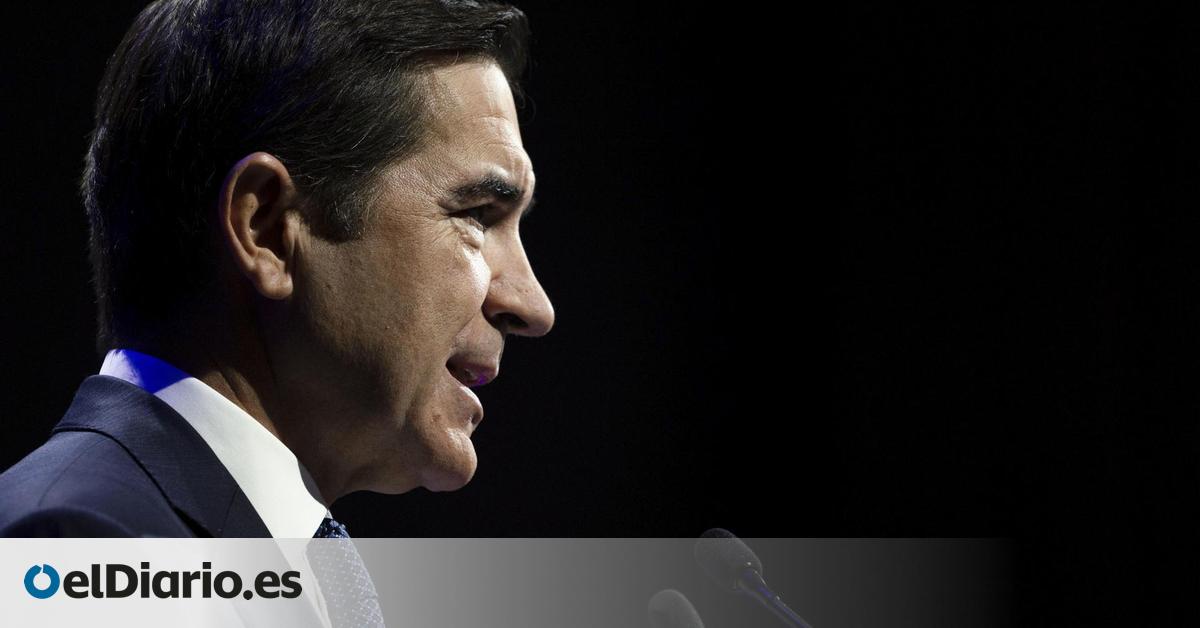
The result of the purchase offer (OPA) launched by BBVA for Banco Sabadell will not be known until next Friday. The acceptance period – the time that Sabadell shareholders have had to sell their shares – ended last Friday, which has left a waiting period of one week in which any clue can be decisive in trying to intuit what has happened in a key takeover bid for the Spanish financial system.
One of those clues has already come from Banco Sabadell, which has detailed to the National Securities Market Commission (CNMV) that BBVA has had minimal support from minority shareholders who, in addition, are clients of the Catalan bank. A support that, in many cases, may have been influenced by an emotional component, from small investors who do not want changes in an entity to which they are attached.
For now, what Sabadell has communicated is how many clients, who are also shareholders, have attended the takeover bid. In total, 2.8% of those investors who have deposited their titles in the Sabadell bank itself have accepted the offer. That is equivalent to 1.1% of the total capital. If this support had been a majority, BBVA would have already achieved 30%.
It must also be taken into account that there are more minority shareholders, small investors who have deposited their Sabadell shares in other banks, which would be close to around 10% of the capital, according to several financial sources consulted.
The rejection that is already known
In recent weeks, BBVA and Sabadell have been dropping significantly contradictory messages. The first, who believe that acceptance will exceed 50%. The seconds, which will not reach 30%. What is known, today, is that there are more than 35% that have already expressed their rejection of this corporate movement.
Who is in the no? On the one hand, the aforementioned almost 30% of Sabadell shareholders/clients who have not attended the takeover bid. On the other, 5% in the hands of Zurich. The Swiss insurer maintains a product marketing agreement with Sabadell and justified that BBVA’s proposal did not seem attractive to it. To these percentages we should add the entity’s own treasury stock, which represents just over 0.5% of the share capital, according to the CNMV.
Then there is the board of directors of Sabadell. There we must subtract the shareholder David Martínez, who communicated days ago his intention to sell his 3.8% to BBVA. Aside from Martínez, the rest of the directors have maintained their rejection of the takeover bid.
In fact, in recent days, senior managers of the Catalan entity have been buying shares of the bank. Specifically, six executives have acquired titles worth more than 700,000 euros, including its CEO, César González-Bueno. For example, only two members of the council, González-Bueno himself; and the ‘chief risk officer’, David Vegara – former Secretary of State for the Economy – have bought more than 167,000 shares in recent weeks. These last purchases leave the participation in the hands of the directors who reject the takeover bid at around 0.2%. This percentage includes the participation of the president of the Catalan bank himself, Josep Oliu, who holds 0.16% of the capital.
And what remains to be known
It remains to be known, therefore, what small investors who do not have their Sabadell shares deposited in the entity have done. And, above all, it remains to be known what has happened to the large international funds.
For example, as the two banks have been stating in recent weeks, there is close to 30% of Sabadell’s capital that, until the takeover bid, has been in the hands of active investment funds, which are changing their exposure to different listed companies or assets. Added to this are more firms, which either bet on passive, indexed products – they follow stock market indices -, are arbitrageurs or are in both banks, because sometimes they balance with short-term positions in one entity and long-term positions in another. Among all of them is Blackrock, the global investment giant, which is present in almost the entire Ibex and which, in recent weeks, has been increasing its participation in Sabadell.
The following graph summarizes Sabadell’s shareholders, according to the latest data published in the CNMV.
And in the market it is believed, above all, that there will be another offer. “The takeover bid will remain in the range of 30% and 50%,” says Javier Cabrera, XTB analyst. “It must be taken into account that Sabadell shareholders with their shares deposited in the bank itself possibly have close ties with the entity and have been clients and shareholders for years, so the decision has been highly conditioned. However, we believe that the percentage of acceptance by institutional investors will be higher, which will allow it to reach 30%. In our opinion, the scenario of a second BBVA-Sabadell takeover bid is gaining a lot of strength,” he adds.
For this second takeover bid there are also indications in the evolution of the shares. For example, if there is no new offer, the market believes that the shares of both banks would go down, and this is not the case. For now, this Tuesday Sabadell shares rose 1.09% (up to 3.2 euros) and BBVA shares rose 0.72%, up to 15.98 euros per share.
The following graph summarizes the evolution of the shares in recent months.
If BBVA remains between 30% and 50%, the CNMV would force it to launch that second takeover bid. With an asterisk: the Basque bank has to renounce the acceptance threshold that was set at the beginning, which involved exceeding that 50% of the capital.
In that scenario, the CNMV would be the one that sets the price and, again, both one bank and another are trying to influence what the amount to be paid should be. For example, BBVA states that it would have to be the same price of the takeover bid (around 3.39 euros per share) and Sabadell, that it should be higher. In its prospectus, BBVA refers to a point of the takeover law (9.2.e.) that states that “when the acquisition of the securities has been carried out through an exchange or conversion, the price will be calculated as the weighted average of the market prices of the indicated securities on the date of acquisition.” The bank chaired by Carlos Torres understands that this is the price of October 10.
It is clear, therefore, that if there is a second takeover bid, it will be the CNMV that decides the price. Specifically, the organization chaired by Carlos San Basilio, stressed that when it comes time it will “make known the criteria for determining the equitable price, below which the price set by the offeror could not be placed.”
And he issued a warning not to speculate. “Any statement regarding the determination of the equitable price that is transferred to the market before the CNMV makes these criteria known must be considered mere speculation,” so the organization “will exercise its supervisory and sanctioning powers, if necessary, in compliance with the applicable regulations, independently and with the priority objective of protecting investors and shareholders.”
Source: www.eldiario.es

